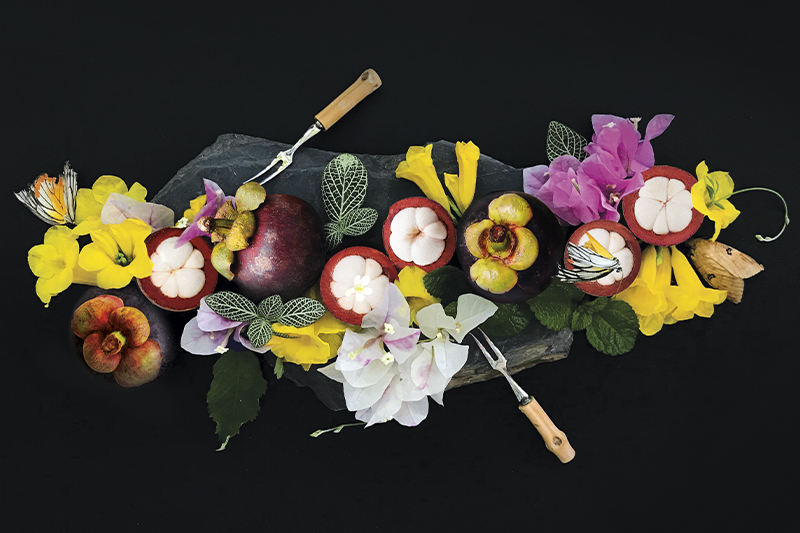
Chilling with the Queen of Fruits
Looking like a purple tennis ball with a funny green hat, the mangosteen has been crowned a foodie favourite alongside King Durian.
Words: Chusri Ngamprasert
Photo: Kay Choomongkol
Cherished for its delicious mix of sweet and tangy flavours, the origins of the mangosteen are unknown – though the fruit is believed to have first sprouted in Malaysia or eastern Indonesia. Renowned British botanist EJH Corner believed the wild fruit was first domesticated in Thailand or Myanmar.
The spherical fruits are flattened on the top and bottom with a thick deep purple shell, which is cut open to reveal a snow-white rosette comprised of four to eight seeds wrapped in juicy flesh. The seeds are edible, but some choose to discard them because they are a bit hard and bitter.
The mangosteen brims with health benefits, offering eaters a variety of essential minerals, vitamins and fibre while also being low in calories. It also contains xanthones, a unique plant compound with antioxidant properties which are believed to help maintain healthy blood-sugar levels, reduce inflammation and even protect eaters from cancer.
Botanists classify mangosteen as asexual – like most of the fruit found in this region. With no fertilisation required to reproduce, baby seedlings remain genetically identical to the mother plant.
According to the Chinese, mangosteen is a highly effective antidote to the “heat” that comes with consuming the king of fruits – the spiky durian. So eating mangosteen is recommended after a durian feast to balance the yin and yang in the body.
With an aroma and tangy flavour somewhere between lychee, pineapple, strawberry and peach, the mangosteen has caught the attention of chefs and foodies. Toss the white flesh into a salad or turn it into ice-cream, juice, slushy, mocktail or cocktail. Or just serve it fresh – nothing beats the scorching heat better than a cooling mangosteen!
